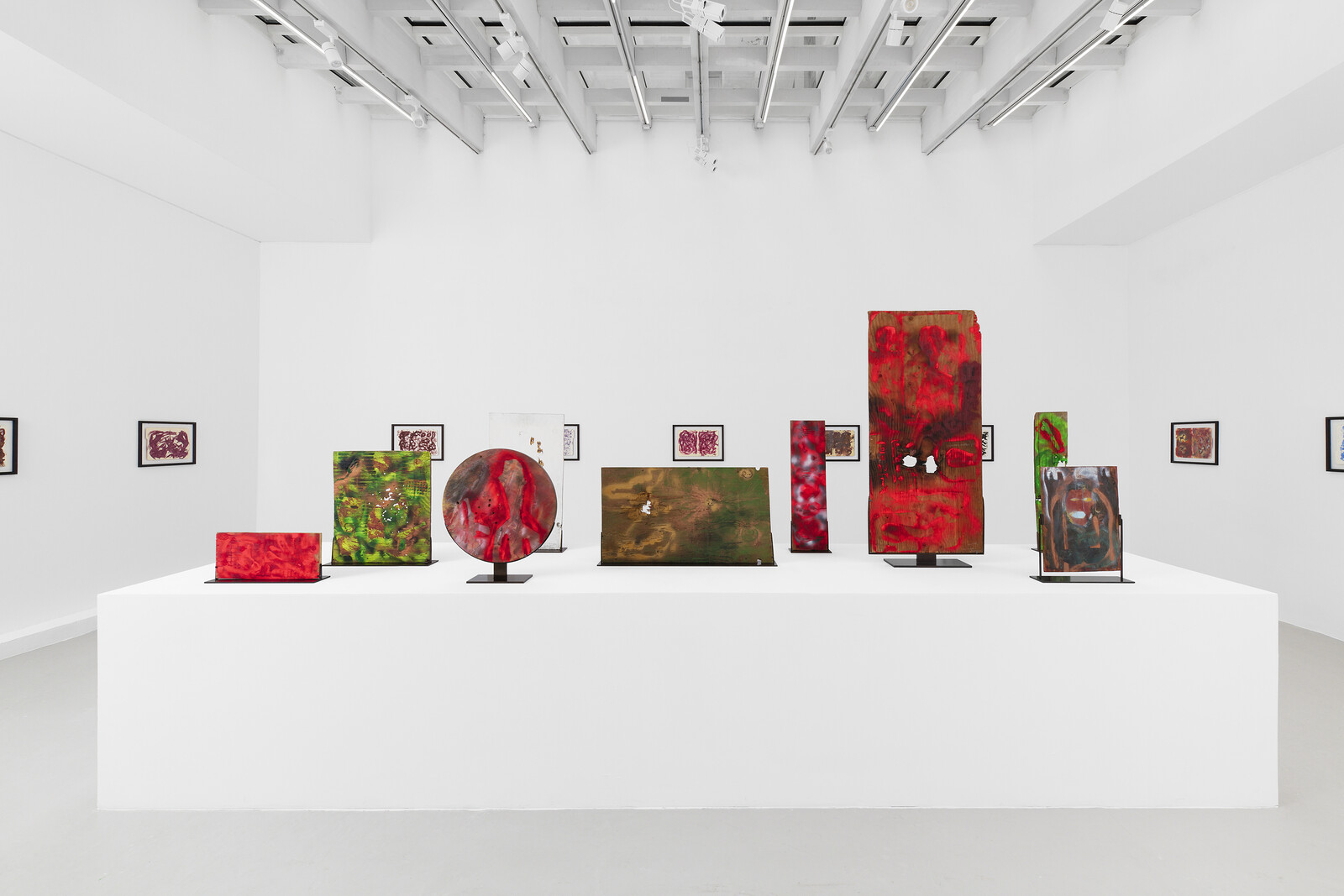The Ripper Spirals
March 11–April 29, 2023
44 rue Quicampoix
75004 Paris
France
Hours: Tuesday–Saturday 11am–7pm
T +33 9 79 26 16 38
info@semiose.com
The cult that revolves around William S. Burroughs (1914–97), his reputation as an author who was both junkie and genius, his invention of the cut-up technique in Paris in the 1950s, alongside Brion Gysin, his influence that endures through the work of generations of artists, musicians and even film directors such as Gus Van Sant, who invited him to take part in his movie Drugstore Cowboy (1989), all evidently lend each of his artistic works the status of a fetish object. Yet in order to better observe and understand what the author of The Naked Lunch (1959) has left before our eyes, we must go so much further than this state of idolatry.
Both close up and from a distance, the paintings “executed” by Burroughs in Kansas, in the 1980s and after, seem to me to be the epitome of punk painting. Indeed, a friend recently whispered in my ear that one of these “shotgun paintings” was blasted out by the singer Debby Harry of the group Blondie. There’s something wild about this abstract bad painting, these messy compositions and his somewhat tasteless palette—I can’t help but see and hear traces of Californian punk or the Beastie Boys Sabotage (1993), rather than the New York mythology that habitually clings to Burroughs’ needle-pocked skin.
The Shotgun Paintings and Burroughs’ other artworks clearly belong to this sabotage operation: he prevents any direct and convenient communication between the paintings and their viewer, refusing any messaging, gluing (sometimes repeatedly) images from magazines to the canvases, saturating the spaces with marks; jamming is obviously the true modus operandi of these paintings. As for the holes made by the gunshots, they are there to interrupt the flow once again, yet at the same time open “doors” to a liberating beyond.
Not entirely by happy coincidence in the times we are experiencing, it was in a recent and masterful essay by queer philosopher Paul B. Preciado Dysphoria Mundi (2022), that I found some enlightening and extremely contemporary pages concerning the American writer: “For Burroughs, these acts of sabotage had a therapeutic, almost organic purpose. They were intended to heal the social body: mass communication had generated a form of contamination, against which it was only possible to fight by intentionally hijacking the inscription machines. Electronic guerilla warfare was the only thing capable of ‘releasing the virus contained in the word and thus bringing about social chaos’.”
“Language is a virus”: this declaration, found at the heart of Burroughs’ thought, is examined and reused by Preciado in a context of dysphoria, i.e. one of general disorder exacerbated by the Covid-19 pandemic. “Today, we are probably better able to understand” this strange and viral theory about language that we must also extend to the visual language used in mass media and communication: writing (and also language, speech and communication) is always an infection. Yet Burroughs’ proactive proposals to deal with this contamination are crucial: “For Burroughs, the writer and activist’s task was to attempt to use language as an inoculation, as a vaccine. Language has infected us and we can only be cured by the intentional hijacking of the semiotic machines that inhabit us,” and that includes turning them against themselves and against the poisonous power they exert on us and within us.
Swimming against the current as always, Burroughs reminds us of the counter-force embodied by painting and artistic practice, with works he originally made for his own personal mental hygiene, not for the benefit of a spectator, in a mix of quasi-automatic practice, agitated thought, anti-media therapy, acute paranoia and anti-establishment painting. —Jean-Max Colard (Translation: Chris Atkinson).
Jean-Max Colard is an art critic and exhibition curator. He is currently head of the Spoken Word department at the Pompidou Center in Paris.








